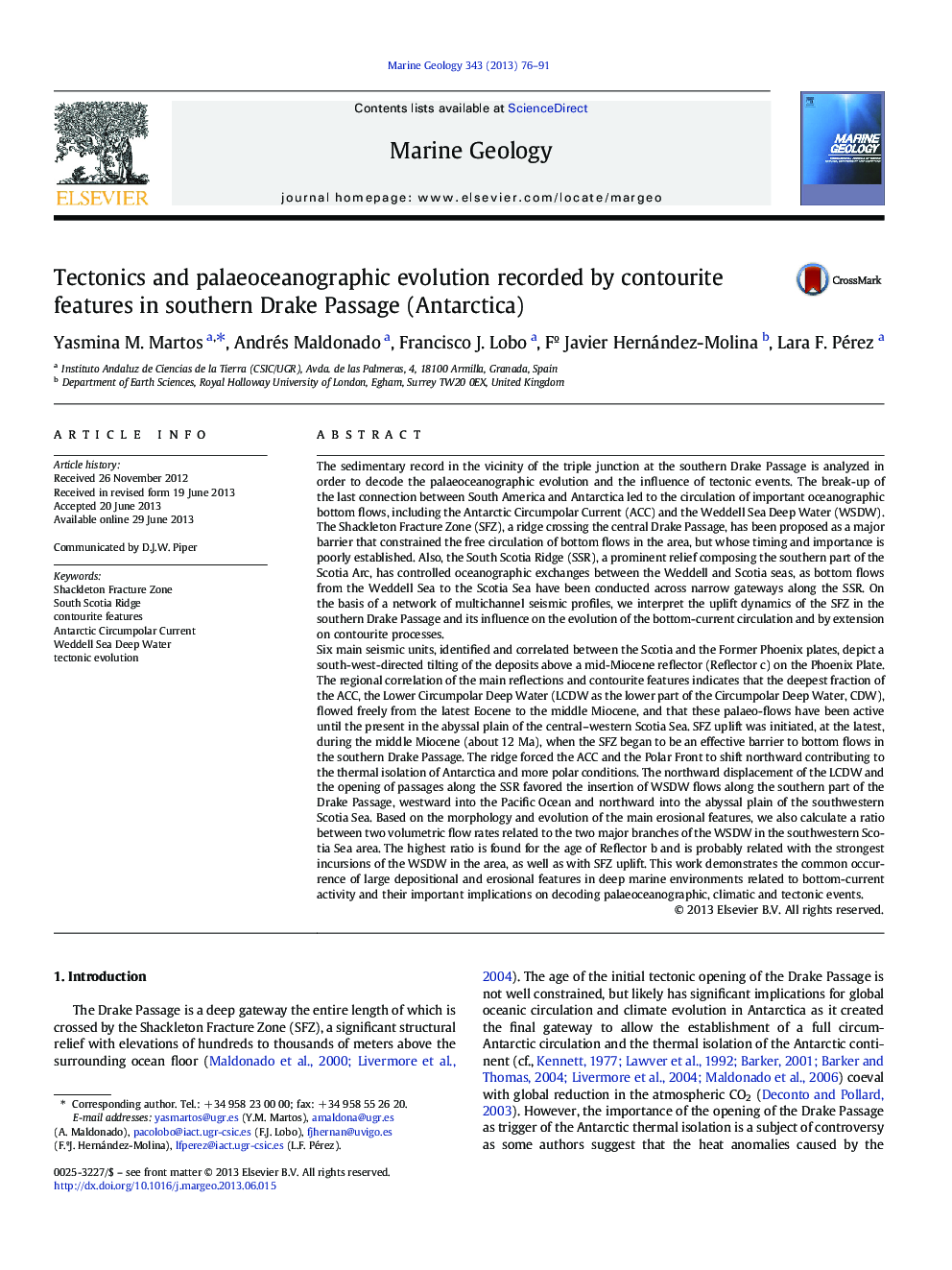| Article ID | Journal | Published Year | Pages | File Type |
|---|---|---|---|---|
| 6441717 | Marine Geology | 2013 | 16 Pages |
Abstract
Six main seismic units, identified and correlated between the Scotia and the Former Phoenix plates, depict a south-west-directed tilting of the deposits above a mid-Miocene reflector (Reflector c) on the Phoenix Plate. The regional correlation of the main reflections and contourite features indicates that the deepest fraction of the ACC, the Lower Circumpolar Deep Water (LCDW as the lower part of the Circumpolar Deep Water, CDW), flowed freely from the latest Eocene to the middle Miocene, and that these palaeo-flows have been active until the present in the abyssal plain of the central-western Scotia Sea. SFZ uplift was initiated, at the latest, during the middle Miocene (about 12Â Ma), when the SFZ began to be an effective barrier to bottom flows in the southern Drake Passage. The ridge forced the ACC and the Polar Front to shift northward contributing to the thermal isolation of Antarctica and more polar conditions. The northward displacement of the LCDW and the opening of passages along the SSR favored the insertion of WSDW flows along the southern part of the Drake Passage, westward into the Pacific Ocean and northward into the abyssal plain of the southwestern Scotia Sea. Based on the morphology and evolution of the main erosional features, we also calculate a ratio between two volumetric flow rates related to the two major branches of the WSDW in the southwestern Scotia Sea area. The highest ratio is found for the age of Reflector b and is probably related with the strongest incursions of the WSDW in the area, as well as with SFZ uplift. This work demonstrates the common occurrence of large depositional and erosional features in deep marine environments related to bottom-current activity and their important implications on decoding palaeoceanographic, climatic and tectonic events.
Related Topics
Physical Sciences and Engineering
Earth and Planetary Sciences
Geochemistry and Petrology
Authors
Yasmina M. Martos, Andrés Maldonado, Francisco J. Lobo, Fº Javier Hernández-Molina, Lara F. Pérez,
